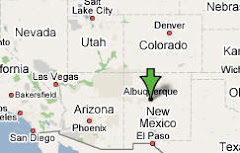We've learned so much the past two weekends, attending local farming conferences that taught us things like how to
harvest rainwater (to multiply average annual rainfall by at least 3x!), how to enrich soil organically, how to plan your garden or farm economically, and market research for what to grow that the local economy needs. This is serious stuff folks!
We're still overwhelmed with the sheer amount of information that's out there, and everything we have to do to transform our 2-acre blank-slate property into a production vegetable and fruit farm (not sure about animals yet--that's phase III--see below). So, we decided to sit down for a few hours each week, share all the information we learned at the conferences (we divided and conquered at the conference sessions), and start mapping out a landscape plan and timeline through the end of this year. It will take a lot of learning, mistakes, sheer discipline, and pig-headed determination, but we think we have what it takes!
So, here's the rough plan so far:
Phase I: Spring/Summer/Fall 2008
Establish infrastructure and prepare the land for production farming. This will include:
- Market research: visit local farms and farmers' markets, discover what grows best in our parts and what the market demands (including restaurants, schools, grocers, farmers markets, CSAs, etc.)
- Plann where to plant things, especially major trees, fruit/nut tree groves, and invasive vines (blackberries grow like weeds out here!)
- Eliminate the 3-4 cement areas that were once outbuilding foundations (and a makeshift basketball court). Jon has been doing this by hand with a sledge hammer. Makes for nice guns! (teehee)
- Turn the carport in the back into a greenhouse
- Establish composting bins and a recycling/composting system from house-to-farm (this is already in progress thanks in part, ironically, to Target stores)
- Tear up unwanted grass areas and re-route existing drip irrigation system to accommodate planting plan
- Establish our water rights with the Middle Rio Grande Conservancy District so we can flood our fields via the acequia, or irrigation ditch, on the back of our property
- Build water overflow and rain catchment systems around the house and property
- Enrich soil on nearly 2 acres for planting next season
- Begin flower garden in front courtyard (before/after photos to come!)
- Plant a small experimental garden to test variety hardiness (Val wants pumpkins for the Fall)
- Sell experimental crops at local farmers' markets to find out what it's like to wake up at 4am, harvest fresh produce, haul it to the market, and while away a Saturday in the hot sun....
- Build cold frames for winter crops
- and much, much more!
Phase II: Winter 2008/Spring 2009
- Plant winter crops
- Begin cultivating for planting rows in spring
- Plant trees
- Plant crops for Summer and Fall 2009 harvests!
Phase III: Summer/Fall 2009
- Decide if/how to incorporate animals on the farm - chickens, sheep, etc.
Lots of work ahead of us, but oh so gratifying. In the meantime, we've scheduled local farm visits over the next few weeks both for fun and for research. First stop: an organic goat cheese farm in Estancia, about 1 hour east of us. We'd also like to meet and work with another couple doing much of the same at their
Ironwood Farm Project in Albuquerque's south valley.
Farmers' markets don't really start in New Mexico until May or June, but we have attended the winter market in Los Ranchos, which was a bit sparse. However, we did pick up some PHENOMENAL oyster mushrooms grown organically on straw bales in Mountainair, a great loaf of fresh-baked Italian bread baked in Los Ranchos (just next door to the market!), and some organic raspberry-red chile jam from
Heidi's Raspberry Farm in Corrales, NM. We made mini-pizzas that night on slices from the Italian loaf, topped with cheese, fresh pesto that we made, and the oyster mushrooms sauteed in butter and garlic. Mmmmmmm.....
Life doesn't get much better than this.

